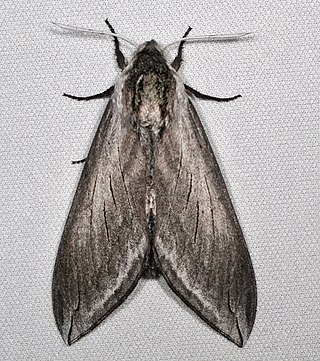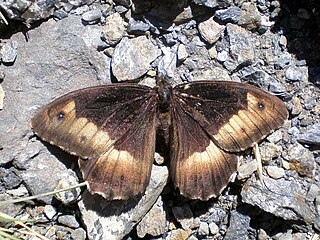
The green-veined white is a butterfly of the family Pieridae.

Pieris rapae is a small- to medium-sized butterfly species of the whites-and-yellows family Pieridae. It is known in Europe as the small white, in North America as the cabbage white or cabbage butterfly, on several continents as the small cabbage white, and in New Zealand as the white butterfly. The butterfly is recognizable by its white color with small black dots on its wings, and it can be distinguished from P. brassicae by its larger size and the black band at the tip of its forewings.

Pieris brassicae, the large white, also called cabbage butterfly, cabbage white, cabbage moth (erroneously), or in India the large cabbage white, is a butterfly in the family Pieridae. It is a close relative of the small white, Pieris rapae.

Pieris, the whites or garden whites, is a widespread now almost cosmopolitan genus of butterflies of the family Pieridae. The highest species diversity is in the Palearctic, with a higher diversity in Europe and eastern North America than the similar and closely related Pontia. The females of many Pieris butterflies are UV reflecting, while the male wings are strongly UV absorbing due to pigments in the scales.

Pieris bryoniae, the dark-veined white or mountain green-veined white, is a Palearctic butterfly of the family Pieridae.

Pieris oleracea, or more commonly known as the mustard white, is a butterfly in the family Pieridae native to a large part of Canada and the northeastern United States. The nearly all-white butterfly is often found in wooded areas or open plains. There are two seasonal forms, which make it distinct from other similar species. Because of climate change, populations are moving further north.

Pieris virginiensis, the West Virginia white, is a butterfly found in North America in the Great Lakes states, along the Appalachians from New England to Alabama, and in southern Ontario. They are typically found in moist deciduous forests. Forestry, development, and a highly-invasive species that it confuses with its host plant (Cardamine) are causing this species to decline.

Aporia crataegi, the black-veined white, is a large butterfly of the family Pieridae. A. crataegi is widespread and common. Its range extends from northwest Africa in the west to Transcaucasia and across the Palearctic to Siberia and Japan in the east. In the south, it is found in Turkey, Cyprus, Israel, Lebanon and Syria. It is not usually present in the British Isles or northern Scandinavia.
The term cabbage worm is primarily used for any of four kinds of lepidopteran larvae that feed on cabbages and other cole crops. Favorite foods include broccoli, cauliflower, Brussels sprouts, collards, kale, mustard greens, turnip greens, radishes, turnips, rutabagas and kohlrabi. This small group of similar pest species is known to agriculturists as the cabbage worm compte butterflies.

Sphinx perelegans, commonly known as the elegant sphinx, is a species of hawkmoth described by Henry Edwards in 1874. It is a large gray moth native to western North America.

Twinhills Woods and Meadows is a 21.2 hectare biological Site of Special Scientific Interest on the Monarch's Way south of Dulcote in Somerset, notified in 1990.

The Canary Islands large white is a species of butterfly in the family Pieridae. It is endemic to the Canary Islands (Spain).

Hipparchia fagi, the woodland grayling, is a butterfly of the family Nymphalidae.

Pontia protodice, the checkered white or southern cabbage butterfly, is a common North American butterfly in the family Pieridae. Its green larva is a type of cabbage worm.

Papilio androgeus, the Androgeus swallowtail, queen page, or queen swallowtail, is a Neotropical butterfly of the family Papilionidae. It is found from Mexico to Argentina with a small population in southern Florida.















